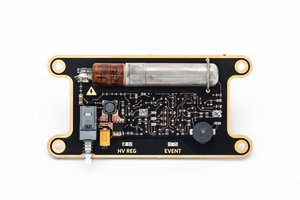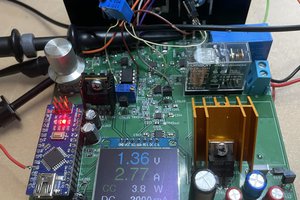The circuit is based on a Wheatstone bridge with resistors R1, R2, R3 and R4. R3 and R4 are 10k NTC resistors. These are negative temperature coefficient resistors with a 10k resistance value at 25ºC. There is a complex equation or look up table for matching its resistance to the temperature but, in the vicinity of 25ºC, they reduce their value approximately 4% per degree Celsius. The temperature in summer is around this level and I just want this device for telling small differences, in the range of 1 or 2 degrees only.
I placed a long-tailed pair or differential amplifier (Q1-Q2) between the mid points of the bridge. Q3-Q4 provide a constant current source. This section is found in most operational amplifiers, as it has a high input impedance and is sensitive to differential, and not common mode, signals.
NTC resistor R3 would be place outside. If the temperature is the same as inside, R4 would have the same resistance, the bridge is balanced and Q1-Q2 bases would have the same voltage, as can be seen in the schematic with node voltages. In that situation the collector voltages of Q1 and Q2 are equal, at 4.425V. The drop from the supply rail is just below the thresehold for Q5-Q6 to become forward biased, so both D3-D4 LEDs are off.
A temperature difference of 0.5ºC will make one resistor 2% higher than the other. If it is warmer outside, R3 will show 9800 ohm, and set a voltage level 24mV lower in Q1 base than there is in Q2's. The transconductance of a bipolar transistor is gm=Ic/Vt; in this case 122.4uA/26mV=0.0047077 ohm-1; multiplied by the voltage variation we would have a 100uA decrease in Q1 collector current, but this isn't so. As the current source in Q3 must still sink 245uA, the voltage at the common emitters node is lowered by approximately half the input drop (14mV) so the Vbe voltage in Q2 becomes 14mV higher. We have a 50uA decrease in Q1 collector current and 50uA increase in Q2's. This turns Q6 into the active region and changes its collector, and D3 LED current, from 0 to 4mA. A 1 ºC (or just 0.9ºC) difference will drive the maximum current, 10mA, through the output transistor and LED. The red LED means "stop, don't open the window" and the green one "clear to open".
For the moment this is a simulation only. I have not built this circuit with electronic parts but I have designed it with the intention to be easily and cheaply reproducible. I chose a 5V supply with the intention of powering the circuit from a USB powerbank. I have run simulations to see the dependence with supply, Rc resistor, current source and bridge resistors variation. The result is quite consistent, so the circuit will be tolerant to these parameters. In any case, R1 or R2 should be built with a 9K fixed resistor in series with a 2k variable one in order to obtain a perfect balance by manual adjust. The differential amplifier will have some voltage offset due to differences between Q1 and Q2. This will also be nulled out with the variable resistor.
 Ricardo
Ricardo

 Caleb W.
Caleb W.
 Bud Bennett
Bud Bennett
 jaromir.sukuba
jaromir.sukuba